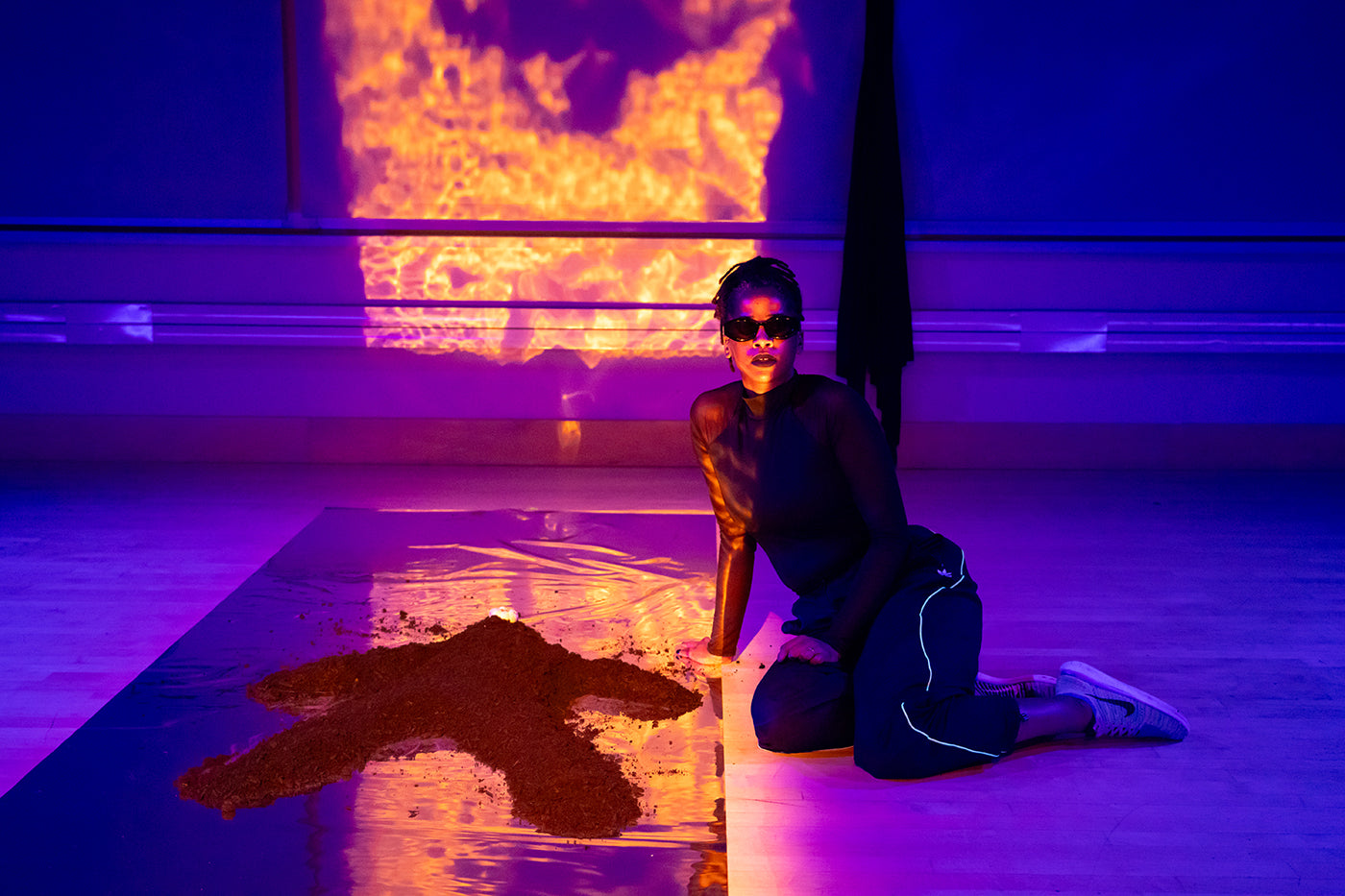Kyle Marshall also attends to some hero worship—in his case, Joan of Arc, known for defying gender norms to heroically defend France under Charles VII. In the program, Marshall says his “Joan” reinvents that history to draw attention to battles for freedom from slavery and colonial rule in the Americas. On stage, we meet Joan, as danced with powerful presence by Syd Worthy. She inspires and empowers her army, represented by a fierce Justin Daniels, Taina Lyons, and Kellye Smith. The dancers’ costumes (by Edo Tastic) cleverly imitate armor with diamond shaped insets on their jerseys. A clue that these are not 15th century warriors is in the tribal markings on their faces: a white swath of paint outlines their jaws and chins. Worthy sports a C around one eye.
Marshall’s choreography for “Joan” refers back to the golden age of modern dance. Earnest and strong, with clear patterns, and character driven, it recalls the drama of Martha Graham. There’s a moment when the trio of women face inward that, with different costumes, could have been pulled directly from Isadora Duncan. Yet there are signs of a contemporary mind at work. When the quartet clusters with their backs to the center, their depiction of protective vigilance reminds me of a movie moment when law enforcement arrives to clear the space of danger. The frenzied string music raises a feeling of anxiety, then mellows for a duet where two women lift each other in a display of power. Daniels is particularly impressive with some soaring leaps.
Marshall, who formerly danced with the Trisha Brown Company, is a rising star. His work with the company he founded in 2014, Kyle Marshall Choreography, has been recognized by the Bessie Awards and with the Dance Magazine Harkness Promise Award in 2020. “Joan” is part of a trio of work by Marshall, inspired by music of the late Black and gay composer, Julian Eastman, whose score for ten cellos features in “Joan.” Another part, workshopped last year at Jacob’s Pillow explores feminine energy with a much different movement vocabulary. I look forward to seeing more.










comments